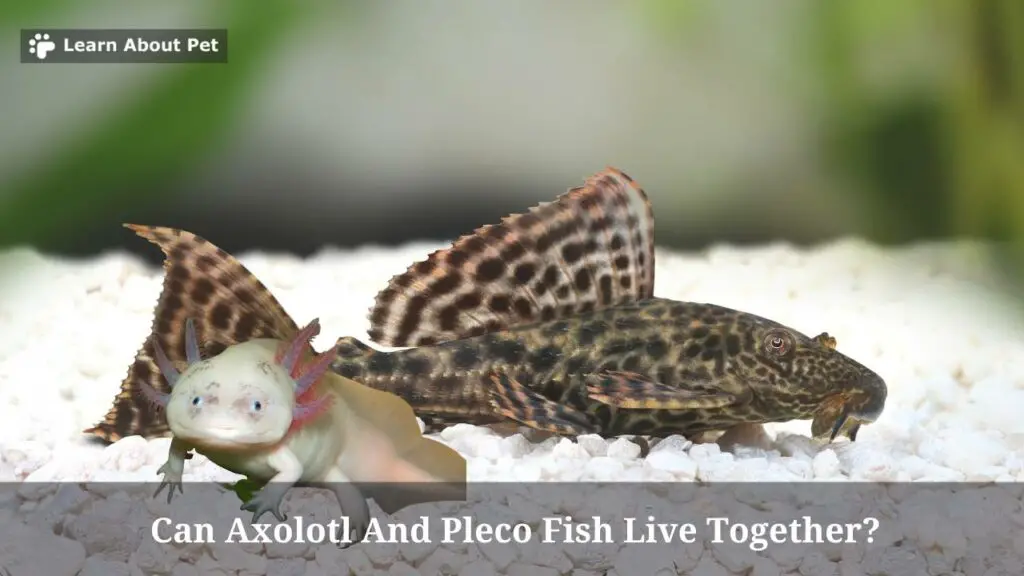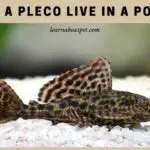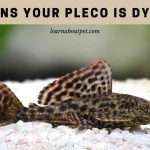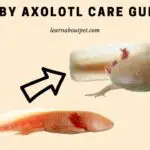Many aquatic pet owners wonder if all fish are compatible with Axolotls. One of the fish that is the target of living with Axolotls in one tank is the Pleco fish.
Axolotl and Pleco are aquatic pets with different requirements, but can they coexist? Having Axolotls in the same tank with Pleco fish is not recommended and is not a good idea because they’re not compatible in many ways.
Axolotls live in cold water, while Pleco is a tropical fish. Putting the two together can torture one of them for not being able to get their suitable temperature. And there are several other factors such as size differences, diets, and behaviors.

Let’s learn why Pleco fish are not recommended for a tank with Axolotls. Let’s read this article to the end.
Can Axolotls And Pleco Fishes Live Together?
Axolotls and Pleco cannot get their ideal living environment together in one tank. In addition to different temperature requirements, Axolotls have a significant size difference when Pleco is in their full-grown size. While the Axolotl can reach 14 inches long, the adult Plecos can be two feet long.
Some aquatic pet owners agree to provide a big aquarium for Pleco and Axolotl homes, but that doesn’t solve the problem. Pleco and Axolotl require different temperatures and cannot be equated in the same tank.
Can You Put Plecos With Axolotls?
Axolotls need a spacious place to live to enjoy their environment. Imagine you put a large fish in an Axie’s tank, and the Axolotl becomes uncomfortable for swimming and has little access in its tank.
Can an Axolotl live with a Pleco? Adult Pleco can be likened to an elephant in the room. Axolotls are relatively small compared to Plecos.
Although the Pleco has no problem with the Axolotl, the Axolotl is the most problematic because it doesn’t have space to survive.
After all, the big aquarium is not enough to accommodate one Axolotl that already has an adult Pleco in it.
If the Axolotl can’t live with smaller fish because the Axolotl can be aggressive. For a Pleco and Axolotl case in one tank, it’s the opposite.
Axolotls will feel intimidated by the size of the Pleco and not have enough space to enjoy their time.
Common Pleco And Axolotl Behavior
Knowing some of the behavior of the fish types that we put in the aquarium will reduce the possibility of aggressiveness between one fish and another. The table below is the Pleco and Axolotl behavior.
| Pleco’s behavior | Axolotl’s behavior |
| Shy (juvenile) | Aggressive or eating smaller fish |
| Hide during the day | Swimming around the tank |
| Territorial (adult) | Solitary animals |
| Aggressive (adult) | Sedentary |
| Attack or eating slow and smaller fish | Nocturnal |
The Pleco can be much larger than the Axolotl. If the adult Pleco feels the Axolotl is bothering them while swimming around the tank, the Pleco can attack the Axolotl, and the Axolotl retaliates. If one of them is injured, it can cause infection and make it easier for them to get the disease.
Imagine if you put two aggressive animals in the same tank. They can hurt each other and can cause fatal conditions. Think again if you want to unite the Pleco with the Axolotl in one tank.
Are Axolotls And Plecos Good Tank Mates?
Plecos look harmless and only eat algae in the tank. But Plecos can chew everything in front of it. If there are smaller fish, then Pleco does not hesitate to chew other animals.
Pleco can eat slime from Axolotl and can cause injury. If the Axolotl is seriously injured, it’s hard to solve.
Can you keep Plecos with Axolotls? Putting Axolotl and Pleco in one tank is a risky thing. Plecos can grow bigger than Axolotls and take up a lot of space in a tank.
If the tank is small enough, the Axolotl cannot have enough place for swimming around. If the Axolotl is stressed, it will reduce the Axolotl’s lifespan.
Axolotl cannot be said to be good mates with Pleco because of the high probability of attacking each other. The dietary needs and water temperature are also different, so they cannot be categorized as an excellent mate in the same tank.
Can Axolotls Be Stressed If Put Together In A Tank With Plecos?
Axolotls have a habit of swimming around tanks. Although adult Axolotls like to be at the bottom of the tank, they need to swim around to occupy their time. If the Axolotl is in a small tank, they will be stressed, won’t eat, and get sick easily.
Plecos with a large size can take up a lot of space in the tank. The Axolotl can’t stand the bigger fish and feels intimidated by it.
An Axolotl that is under stress can attack other fish, and a Pleco that is bigger can chew everything. Both are bad combos if they are in the same tank when they want to show their aggressiveness together.

Can Bristlenose Plecos Live With Axolotls?
Bristlenose Plecos and Axolotls can’t live together for many reasons. Plecos are more comfortable at warmer temperatures, and Axolotls are the opposite.
The chances for one of them to survive will be smaller because aquatic pets that do not meet their requirements can be stressed and do not live as expected.
Can Plecos live with Axolotls? Axolotls are solitary animals. They are more comfortable when alone in the tank. Plecos also have high aggressiveness when he is the biggest in the tank.
You should not put these two aquatic pets in the same tank. Too many different requirements and can not be equated.
Can Golden Bristlenose Pleco Live With Axolotl?
All types of Plecos are known to eat slime coating on fish. The Axolotl will get sick easily and become fatal if the Axolotl’s slime coat is eaten by the Plecos. It’s the main reason why Plecos shouldn’t be with Axolotl by any means.
It might not be a big deal if you started putting Plecos and Axolotls as a kid. But the problem will start to appear when they grow up.
Are There Algae Eaters That Can Be Kept With Axolotls?
Other algae eaters have similar requirements as Plecos. Algae eaters can chew everything in front of them, including smaller fish.
The big risk of putting algae eaters together with Axolotls is that the Axolotl’s slime coat can be eaten and can be fatal.
5 Reasons Why You May Not Want To Keep Plecos And Axolotls Together
Axolotl and Pleco have a fairly significant size disparity. A full-grown Pleco can reach two feet in length, while Axolotls can only be 14 inches.
The second is the temperature disparity. The Axolotl is usually in cold temperature between 16°C to 18°C, while Pleco is the warmer temperature between 23°C to 28°C.
Third, Axolotls require 7 to 14 dGH water hardness, whereas Plecos is 20 to 35 dGH.
Fourth, Plecos are omnivores even though they prefer plant-based food, while Axolotls consume protein-rich food.
Fifth, Plecos are heavy waste fish that can cause ammonia poisoning in Axolotls.
Final Verdict – Axolotl And Pleco
Pleco fish are known as tank cleaners and algae eaters that can grow up to two feet long, while Axolotls are known as solitary animals that are more comfortable being alone in a tank.

There are a lot of risks when you put Pleco and Axolotl in one tank. The Pleco’s requirements are at warmer temperatures, while Axolotls are at cold temperatures.
There are many other differences, such as dietary requirements, ammonia poisoning, and water hardness. Don’t take a risk with placing two aquatic pets with different needs, or you will suffer a loss.
As a pet lover, make sure to learn about pet more and give your pet axolotl and pet fish a good and comfortable life!

Welcome to Learn About Pet. My name is Rajkumar Ravichandran and I love all pets, travel, and amazing food. I write about my passion and personal experience caring for multiple pets in this blog! ❤️
Post Disclaimer
DISCLAIMER: THIS BLOG OR WEBSITE, "Learn About Pet", DOES NOT PROVIDE YOU WITH MEDICAL ADVICE AND IS NOT A SUBSTITUTE FOR MEDICAL ADVICE. ALWAYS GET IN TOUCH WITH YOUR PERSONAL VETERINARIAN AND USE INFORMATION HERE AS GENERAL ADVICE.
The information, including but not limited to, text, graphics, images and other material contained on this website are for informational purposes only. No material on this site is intended to be a substitute for professional veterinary advice, food recommendation, diagnosis, or treatment. Always seek the advice of your veterinarian or other qualified health care provider with any questions you may have regarding a medical condition or for pet food related questions.







